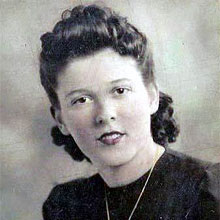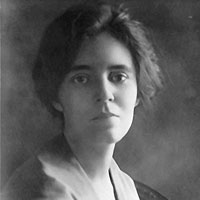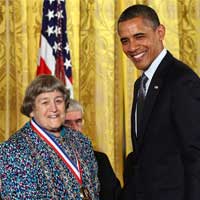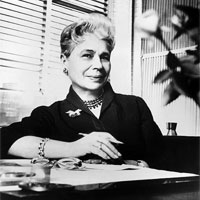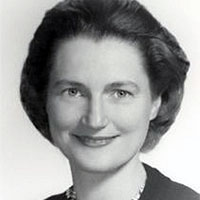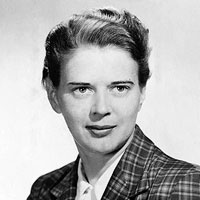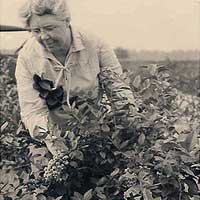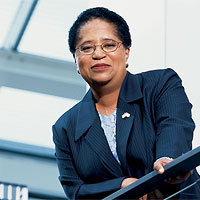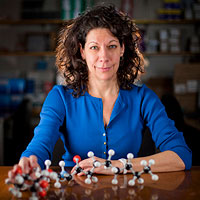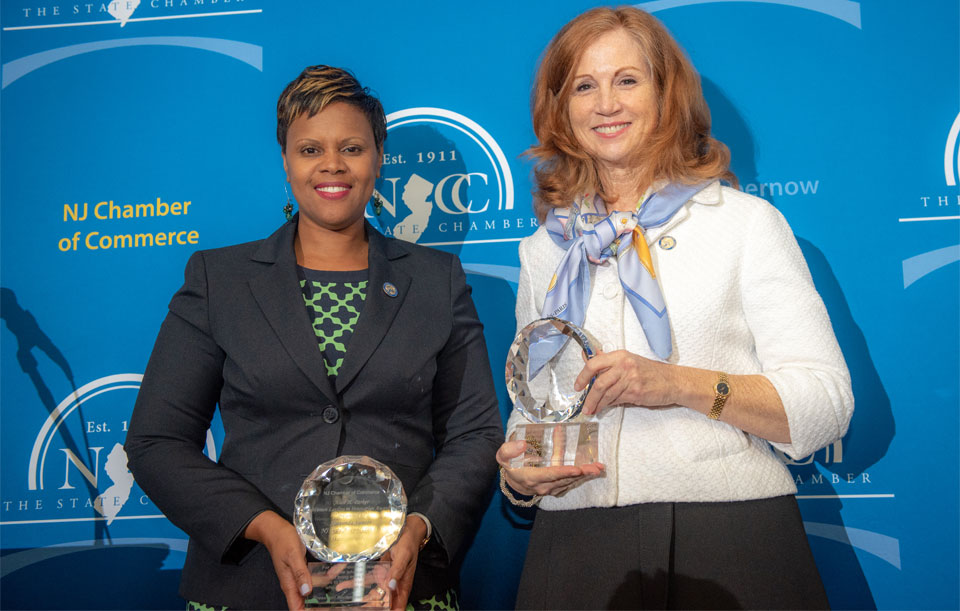Top Women Innovators

Alice H. Parker
| Profession | Inventor |
| Birthplace | Morristown, NJ |
| Innovation | Patented the home heating system while working from her home |
| NJ Connection | Born and raised in Morristown, NJ |
Next time you come in from the cold, think a warm thought for Alice H. Parker.
Born in the year the Civil War ended, it was highly unusual for an African American woman to attend college in her era, but Alice Parker did, and graduated Howard University with honors
A Morristown resident, Parker grew tired of the cold Morristown winters and the limited effectiveness of fireplaces to warm her home. So, she designed a natural gas-fueled “new and improved heating furnace.” It was the first time anyone had thought of using natural gas for home heating.
Her design won her a patent in December 1919 and from her design was born the thermostat and the more familiar forced air furnace in most homes today.
Not much is known of Alice Parker’s life.
Whether her anonymity was by choice or by the social design of the time is also not known, but to recognize her contribution to the state’s history of innovation, the NJ Chamber has named its “Women Leaders in Innovation” award after her.
Alice Paul (1885-1977)
| Profession | Activist |
| Birthplace | Mt. Laurel Township, NJ |
| Innovation | Activist who won women the right to vote |
| NJ Connection | Born in Mt. Laurel, lived most of her life in New Jersey, died in Moorestown |
Alice Paul followed in the footsteps of many 19th century suffragists but she was the one who led the successful crusade to secure the vote for women. All it required of her was seven arrests, three jail terms, a threat to be sent to an insane asylum, multiple hunger strikes, and the enmity of much of the country.
Paul graduated Swathmore College with a degree in biology then followed that with a PhD from the University of Pennsylvania in 1912.
She dedicated her life’s work to earning women the right to vote and helped organize the National Women’s Party to lead this fight. Her crusade was met with deaf ears in Washington D.C. both in Congress and from incoming president Woodrow Wilson.
In response, Paul organized one of the largest protest parades ever seen in the nation’s capital on Wilson’s inauguration day. For the next eighteen months, she and her colleagues picketed in front of the White House - the first known instance of picketing there.
She was arrested numerous times but news coverage of her the rough treatment she endured in prison began to shift the national conscience. Wilson eventually came around to support her cause and after a number failures, the 18th Amendment to the Constitution was passed by Congress in 1920 and retified by the requisite 36 states.
Paul has been inducted into the New Jersey Hall of Fame, the National Women’s Hall of Fame and, in April, 2016, it was announced that Paul’s image would be one of those included in the re-design of the five dollar bill in honor of the women’s suffrage movement.
Sara Spencer Washington (1889-1953)
| Profession | Businesswoman |
| Born | Berkeley, VA |
| Innovation | Created multi-million dollar cosmetics empire for African American women |
| NJ Connection | Established her world headquarters in Atlantic City |
While Sara Spencer Washington’s story was a typical entrepreneurial success story, there was nothing typical about the entrepreneur Sara Spencer Washington.
Washington became one of the first African American women millionaires of the 20th Century by filling a gaping consumer need – beauty and cosmetic products for African American women.
Washington moved to Atlantic City in 1913 and opened her own beauty shop. She brought with her a formidable education including advanced chemistry studied at Columbia University and beauty culture studied in York, Pennsylvania.
Washington developed her own products and a specific beauty system for using them. She worked in her shop by day, sold the products door-to-door at night and soon opened a beauty school where she taught her system to others. The beauty school would expand across the U.S. and around the world.
Each year, more than 25,000 students graduated from Washington’s schools and became entrepreneurs themselves, administering Washington’s beauty system and selling her products door-to-door.
Washington made Atlantic City the site for her world headquarters and laboratory where more than 75 different products were developed and manufactured.
She was a committed philanthropist, and supported a multitude of charities.
When she died in 1953, Washington's enterprise was worth millions of dollars and employed some 500 full-time employees plus 45,000 door-to-door sales people.
Yvonne Brill (1924-2013)
| Profession | Rocket Scientist |
| Born | Winnipeg, Manitoba, Canada |
| Innovation | Developed innovative rocket propulsion systems |
| NJ Connection | Long time Princeton resident; worked for Wright Aeronautics and RCA |
When she attended the University of Manitoba, Yvonne Brill was told in no uncertain terms that because of her gender, she could not study engineering. Undaunted, she studied mathematics and chemistry instead.
Good move. Brill graduated at the top of her class and later earned a Master’s in Chemistry from the University of Southern California.
Her academic performance earned her a job at Douglas Aircraft in California where she began working on the designs of the first satellite system, which would become the foundation for the RAND Corporation.
“No one had the right degrees back then, so it didn’t matter,” she said later. “I didn’t have the engineering but the engineers didn’t have the chemistry and math.”
It is believed during the she was the only woman working on rocket science in the United States in the 1940s. Brill developed the propulsion system (for which she earned a patent) that kept communications satellites from slipping out of their orbits. Her system is now the industry standard.
She worked for two prominent New Jersey companies - Wright Aeronautical and RCA - where she contributed to propulsion systems for NASA missions, including the space shuttle and the Mars Observer.
Her awards are legion. One of them, ironically, was the prestigious American Association of Engineering Societies’ John Fritz Medal, despite never officially getting an engineer’s license.
She also won the NASA Distinguished Public Service Medal, and to cap her career, she was presented the National Medal of Technology and Innovation by President Barack Obama in 2011.
When Brill was inducted into the National Inventor’s Hall of Fame in 2010, two of her fellow inductees were Spencer Silver and Arthur Fry, inventors of the Post-It note. In its article, the Washington Post noted it took two men to invent an adhesive stationary, but only one woman to figure out how to keep satellites in orbit around the Earth.
Ida Cohen Rosenthal (1886-1973)
| Profession | Businesswoman |
| Born | Rakov, Russia |
| Innovation | Changed women’s fashions and ignited a multi-billion dollar industry |
| NJ Connection | Founded the Maiden Form Company in Bayonne where it thrived for almost a century before moving to Iselin |
Before Victoria had a Secret, Maidenform had a dream.
In it, women do everything from the exotic to the everyday wearing a Maiden Form bra. This dream was a post-World War II ad campaign, one of the most successful in Madison Avenue history. It elevated the Maiden Form Brassiere Company to the world’s biggest seller of women’s bras.
The driving force behind Maiden Form’s success and in creating the now multi-billion dollar brassiere industry, was the husband and wife team of Ida and William Rosenthal.
The pair immigrated to New Jersey from Russia in 1905 and soon established a dress shop in Hoboken.
At the time, women’s brassieres were mostly an afterthought. In fact, the Rosenthal’s originally gave away bras with the dresses they sold. But their uniquely designed bras, which were cut to the natural bust line and created “uplift,” became the rage of the fashion world.
In response, the Rosenthals began creating new styles of bras and founded the Maiden Form Brassiere Company in Bayonne (changed to Maidenform in 1960 and moved to Iselin in 2007).
William oversaw design and production until his death in 1958; Ida handled the financial side of the business and became president and later Chair of the Company’s Board. During these years, Maiden Form continued to lead the world in sales of women’s bras and later added other intimate apparel.
“If you really want to make it, become an entrepreneur,” Ida Rosenthal said in her later years, “Then you are in charge of your own destiny.”
Erna Hoover (b 1926)
| Profession | Mathematician |
| Born | Irvington, NJ |
| Innovation | Received one of the world’s first software patents which modernized the national telephone network |
| NJ Connection | Worked at Bell Labs in New Jersey for 32 years |
It wasn’t family and well-wishing friends rushing to Erna Hoover’s house in 1971 right after she had come home from the hospital with her second child. It was a battery of well-heeled, briefcase-toting lawyers who needed her to review important legal paperwork – a patent application Bell Laboratories was filing on Hoover’s behalf.
The Wellesley graduate (with honors) who held a Ph.D. from Yale had used her mathematical skills to create a software program that allowed the national telephone network to evolve from a system of electronic relays which were becoming choked by enormous call volume, to a modern and efficient system capable of managing any amount of calls.
The patent was issued in 1971 and became one of the first software patents event issued.
As a result of this success, Hoover became the first woman supervisor of a technical department at Bell Labs. “When I was hired,” she once said, “the glass ceiling was somewhere between the basement and the sub-basement.”
She worked at the Labs for 32 years focusing on anti-ballistic missile systems and artificial intelligence. She retired in 1987.
In 2008, Hoover was inducted into the National Inventors Hall of Fame in Akron, Ohio.
Beatrice Alice Hicks (1919-1979)
| Profession | Engineer |
| Born | Orange, NJ |
| Innovation | Pioneering engineer with many firsts for women in the field |
| NJ Connection | Born in Orange, earning a degree in chemical engineering from Newark College of Engineering (now NJIT) |
A trip to New York City in the early 1930’s sealed it for teenager Beatrice Hicks. Enthralled by the new engineering marvels like the George Washington Bridge and the Empire State Building, Hicks knew exactly what she wanted to be when she grew up.
But everyone - friends, classmates, teachers and family - tried to dissuade her from pursuing a career as an engineer – a choice considered socially unacceptable for a woman at the time.
But Hicks persisted and graduated from the Newark College of Engineering, one of two women in a class of 900. She would later earn a Master’s Degree in physics from the Stevens Institute.
Most everything Hicks did blazed new trails for women. She became the first woman hired as an engineer by Western Electric.
Three years later she went to work for Newark Controls, her father’s engineering company, and later inherited the business.
She was awarded numerous patents including one for a molecular density scanner and one for a gas density switch utilized by NASA on the Apollo moon missions.
She helped establish, and served as the first president of, the Society of Women Engineers. There were 60 members at its inception. Today, there are 16,000.
She was named Women of the Year in Business by Mademoiselle Magazine in 1952.
She was one of the first women to join the National Academy of Engineers in 1978 and she was inducted into the National Women’s Hall of Fame in 2002.
Elizabeth Coleman White (1871-1954)
| Profession | Businesswoman and Farmer |
| Born | New Lisbon, NJ |
| Innovation | Cultivated the blueberry into a $40 million industry |
| NJ Connection | A New Jersey native who lived on the family farm in Whitesbog Village |
The apple had Thomas Jefferson. The peanut had George Washington Carver.
Fortunately for New Jersey, the blueberry had Elizabeth Coleman White.
Before her time, blueberries in New Jersey were seen as little more than a wild fruit with little promise as a cash crop.
By the time Elizabeth White was done, blueberries would become a $40 million business; they would be cultivated and shipped by the millions of pounds from New Jersey farms to places all over the world; Elizabeth White would become known as “The Blueberry Queen;” and the highbush blueberry would become the official state fruit.
White turned the blueberry into gold by gathering many years’ worth of information about the patterns of wild blueberry plant growth, and from that, devised new varieties of blueberries that could be cultivated.
Within a few years, the White farm yielded around 20,000 barrels of the commercially viable blueberries each year. Today, New Jersey accounts for 21 percent of the world’s blueberry production.
White’s innovations didn’t stop with cultivation.
She showed a deft business talent by helping to organize the New Jersey Blueberry Cooperative Association to promote the blueberry, and she was the first to use cellophane to wrap and ship the product.
Shirley Ann Jackson (b. 1946)
| Profession | Physicist and Educator |
| Born | Washington, D.C. |
| Innovation | Many pioneering achievements for women in science and physics |
| NJ Connection | Worked on applied physics at Bell Labs for 15 years and Professor of Physics at Rutgers University for five years |
Time Magazine called Shirley Ann Jackson the “ultimate role model for women in science” and so it was no surprise that the New Jersey Chamber of Commerce bestowed on Dr. Jackson its first ever Alice H. Parker Women Leaders in Innovation Award in 2015.
Jackson has been a pioneer from the time she turned her love of science into a physics degree from MIT in 1968 – only the second African American woman in the U.S. to earn such a degree. Five years later she became the first African American woman to earn a Ph.D. from MIT in any subject when she earned hers in Theoretical Elementary Particle Physics.
After 15 years as a theoretical physicist at Bell Laboratories in New Jersey, Jackson spent five years as a professor of physics at Rutgers.
In 1999, she became the 18th President of Rensselaer Polytechnic Institute where her leadership has transformed the school into a world-class technology research university.
President Bill Clinton took notice of Jackson and appointed her to serve as chairman of the U.S. Nuclear Regulatory Commission from 1995 to 1999. In 2014, President Barack Obama appointed Jackson as co-chair of the President’s Intelligence Advisory Board.
Describing her as “a national treasure,” the National Science Board selected Jackson as its 2007 recipient of the prestigious Vannevar Bush Award for “a lifetime of achievements in scientific research, education, and senior statesman-like contributions to public policy.”
She culminated a lifetime of awards and recognition in 2015 when she was awarded the National Medal of Science, the nation’s highest honor in science and engineering.
Bonnie Bassler (b. 1962)
| Profession | Biochemist and Educator |
| Born | Chicago, IL |
| Innovation | Breakthrough discoveries in the nature and communication of bacteria |
| NJ Connection | Professor and Chair of Molecular Biology at Princeton University, Howard Hughes Medical Institute Investigator |
Bonnie Bassler has her own fish story but it has nothing to do with the size of her catch.
By closely observing microbes common inside of certain marine animals, the biologist intruded into ongoing “conversations” between bacteria. She found that communication was a chemical process that came to be called “quorum sensing” because bacteria use it to “sense” the presence of fellow bacteria.
Bassler and her associates further discovered that bacteria use quorum sensing to coordinate their invasions of higher organisms (plants, animals, and people).
Bassler’s team has found ways to interfere with quorum sensing, and their work is leading to a new generation of antibiotics, a critical medical initiative in the current era of global resistance to available antibiotics.
For her research into quorum sensing and its disruption, Dr. Bassler is the recipient of the 2016 Alice H. Parker Women Leaders in Innovation Award from the New Jersey Chamber of Commerce.
Born in Chicago and raised in Danville, California, Bassler earned a degree in biochemistry from the University of California, Davis and a Ph.D. in biochemistry from The Johns Hopkins University.
Today, Bassler is Chair and Squibb Professor of Molecular Biology at Princeton University and she is a Howard Hughes Medical Institute Investigator.
She is also a stalwart and daily presence at the Princeton New York Sports Club where she teaches aerobics.
Bassler is a member of the National Academy of Sciences, the American Academy of Arts and Sciences, the American Philosophical Society, and the Royal Society. The latest in a series of prestigious awards, she won is the 2015 Shaw Prize in Life Science and Medicine.


